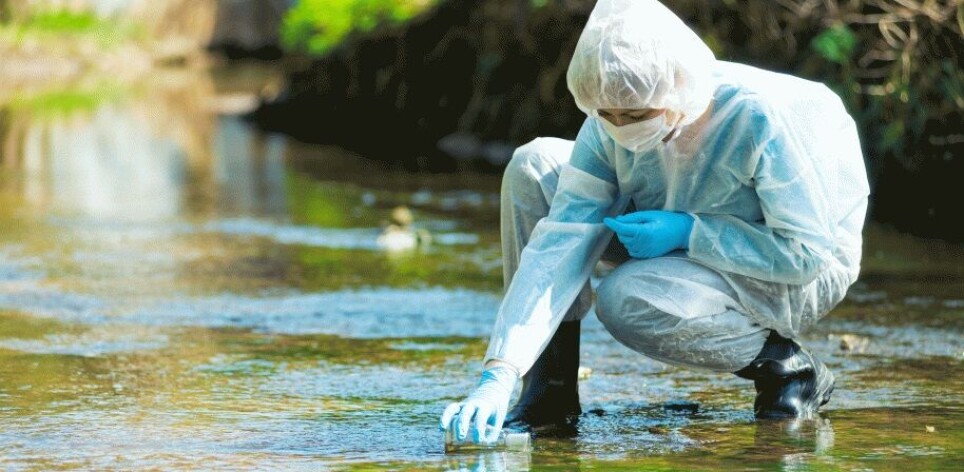THIS ARTICLE/PRESS RELEASE IS PAID FOR AND PRESENTED BY the Norwegian University of Life Sciences (NMBU) - read more

Potentially toxic levels of drugs in more than a quarter of rivers tested
A global study looking at the presence of pharmaceuticals in the world’s rivers found concentrations at potentially toxic levels in more than a quarter of the locations studied.
One in four of 258 rivers contaminated
Researchers looked at 258 rivers across the globe, including the Thames in London and the Amazon in Brazil, to measure the presence of 61 pharmaceuticals such as carbamazepine, metformin and caffeine.
Rivers in over half of the world’s countries were analysed, including in 36 countries with rivers that have never previously been monitored for pharmaceuticals.

First global study of medical contamination of the environment
The study forms part of the Global Monitoring of Pharmaceuticals Project. Led by the UK’s University of York, the project spans 104 countries in 7 continents in a pursuit to better understand the extent and causes of medicinal contamination of freshwater worldwide.
This new study is the first truly global-scale investigation of medicinal contamination in the environment.
Key findings:
- Pharmaceutical pollution is contaminating water on every continent
- There are strong correlations between the socioeconomic status of a country and higher pollution of pharmaceuticals in its rivers (with lower-middle income nations the most polluted)
- High levels of pharmaceutical pollution was most positively associated with regions of high median age, as well as high local unemployment and poverty rates
- The most polluted countries and regions of the world are the ones that have been researched the least (namely sub-Saharan Africa, South America and parts of southern Asia).
- The activities most associated with the highest levels of pharmaceutical pollution included rubbish dumping along river banks, inadequate wastewater infrastructure and pharmaceutical manufacturing, and the dumping of the contents of residual septic tanks into rivers.
A quarter of the sites contained contaminants (such as sulfamethoxazole, propranolol, ciprofloxacin and loratadine) at potentially harmful concentrations.
NMBU’s Aida Cuní-Sanchez contributed with samples from DR Congo and Rwanda. “Bukavu city in eastern DR Congo is the sixth most polluted river of the 258 rivers sampled in the study, and Kinshasha, the country’s capital, the 17th,” she reveals. “Apart from having very limited water waste infrastructure, there is little regulation on access to medicines for both human and veterinary applications in DR Congo, which also contributes to the problem,” explains the environmental scientist and Associate Professor at NMBU’s Department of International Environment Studies.
Monitoring pharmaceuticals in the environment to limit harm
The researchers hope that by increasing the monitoring of pharmaceuticals in the environment, they can develop strategies to limit the effects potentially caused by the presence of pollutants.
The study included well-known rivers such as the Amazon, Mississippi, Thames and the Mekong. Water samples were obtained from sites spanning from a Yanomami Village in Venezuela, where modern medicines are not used, to some of the most populated cities on the planet, such as Delhi, London, New York, Lagos, Las Vegas, and Guangzhou.
Areas of political instability such as Baghdad, the Palestinian West Bank and Yaoundé in Cameroon were also included. The climates where samples were obtained varied from high altitude alpine tundra in Colorado and polar regions in Antarctica, to Tunisian deserts.
Previous studies lacking
While previous studies have monitored active pharmaceuticals ingredients (APIs) in rivers, these have ignored many of the countries of the world, have typically measured only a select few contaminants, and employed different analytical methods. Cumulatively, this has made it difficult to quantify the scale of the problem from a global perspective.
“No such research had ever been conducted in DR Congo before,” states Cuni-Sanchez. “We can show that more is urgently needed.”
The water sample analysis occurred at the University of York’s Centre of Excellence in Mass Spectrometry. Co-leader of the project , John Wilkinson, explains: “With 127 collaborators across 86 institutions worldwide, the Global Monitoring of Pharmaceuticals Project is an excellent example of how the global scientific community can come together to tackle large-scale environmental issues.”
“We’ve known for over two decades now that pharmaceuticals make their way into the aquatic environment where they may affect the biology of living organisms. But one of the largest problems we have faced in tackling this issue is that we have not been very representative when monitoring these contaminants, with almost all of the data focused on a select few areas in North America, Western Europe and China.”
“Through our project, our knowledge of the global distribution of pharmaceuticals in the aquatic environment has now been considerably enhanced. This one study presents data from more countries around the world than the entire scientific community was previously aware of: 36 new countries to be precise, where only 75 had ever been studied before,” adds Wilkinson.
Testing for soil and sediment pollution
The researchers suggest their approach could also be expanded in the future to include other environmental media such as sediments, soils and biota, and could allow for the development of global-scale datasets on pollution.
Reference:
John L. Wilkinson et.al.: Pharmaceutical Pollution of the World’s Rivers. Proceedings of the National Academy of Science (PNAS), 2022.
* Cuní-Sanchez collected the samples in DR Congo and Rwanda whilst working for the University of York, and co-wrote the PNAS article in her current position as Associate Professor at NMBU.
See more content from NMBU:
-
Shopping centres contribute to better health and quality of life
-
We're eating more cashew nuts – and the consequences are serious
-
Do young people with immigrant parents have better health?
-
Who’s picking your strawberries this summer?
-
Can coffee grounds and eggshells be turned into fuel?
-
Rising housing costs fuel inequality in Norway





































